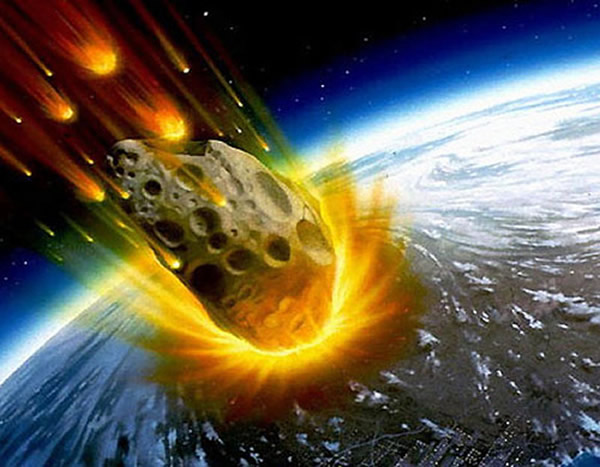The few craters that remained evident on Earth (most had been eroded away) were generally attributed to other causes or treated as fluky rarities.
一般来说,地球上仅有的几个明显的坑(大多数已经被侵蚀干净)要么被归于别的原因,要么被视为罕见现象。
By the time Shoemaker came along, a common view was that Meteor Crater had been formed by an underground steam explosion. Shoemaker knew nothing about underground steam explosions—he couldn't: they don't exist—but he did know all about blast zones. One of his first jobs out of college was to study explosion rings at the Yucca Flats nuclear test site in Nevada. He concluded, as Barringer had before him, that there was nothing at Meteor Crater to suggest volcanic activity, but that there were huge distributions of other stuff— anomalous fine silicas and magnetites principally—that suggested an impact from space. Intrigued, he began to study the subject in his spare time.
到苏梅克前来考察的时候,人们普遍认为陨石坑是由一次地下蒸气喷发形成的。苏梅克对地下蒸气喷发的事儿一无所知——他也无法知道:这种事儿并不存在——但是,他对爆炸地区的事儿知道得很多。大学毕业之后,他的第一项工作就是考察内华达州的尤卡弗莱兹核试验场的爆炸地区。他得出了与此前巴林杰得出的同样结论,陨石坑毫无火山活动的迹象,倒是有大量别的东西——主要是古怪而细微的硅石和磁铁矿石——表明撞击来自太空。他产生了极大兴趣,开始在业余时间研究这个问题。

Working first with his colleague Eleanor Helin and later with his wife, Carolyn, and associate David Levy, Shoemaker began a systematic survey of the inner solar system. They spent one week each month at the Palomar Observatory in California looking for objects, asteroids primarily, whose trajectories carried them across Earth's orbit.
苏梅克起初与同事埃莉诺·赫林合作,后来又与他的妻子卡罗琳和助手戴维·列维合作,开始对太阳内部作系统研究。他们每个月花一周时间在加利福尼亚州的帕洛马天文台,寻找运行路线穿越地球轨道的物体,主要是小行星。
At the time we started, only slightly more than a dozen of these things had ever been discovered in the entire course of astronomical observation, Shoemaker recalled some years later in a television interview. "Astronomers in the twentieth century essentially abandoned the solar system," he added. "Their attention was turned to the stars, the galaxies."
“刚开始的时候,在整个天文观察过程中只发现了10来个这种东西,”几年后苏梅克在一次电视采访中回忆说,“20世纪的天文学家基本上放弃了对太阳系的研究,”他接着说,“他们把注意力转向了恒星,转向了星系。”













